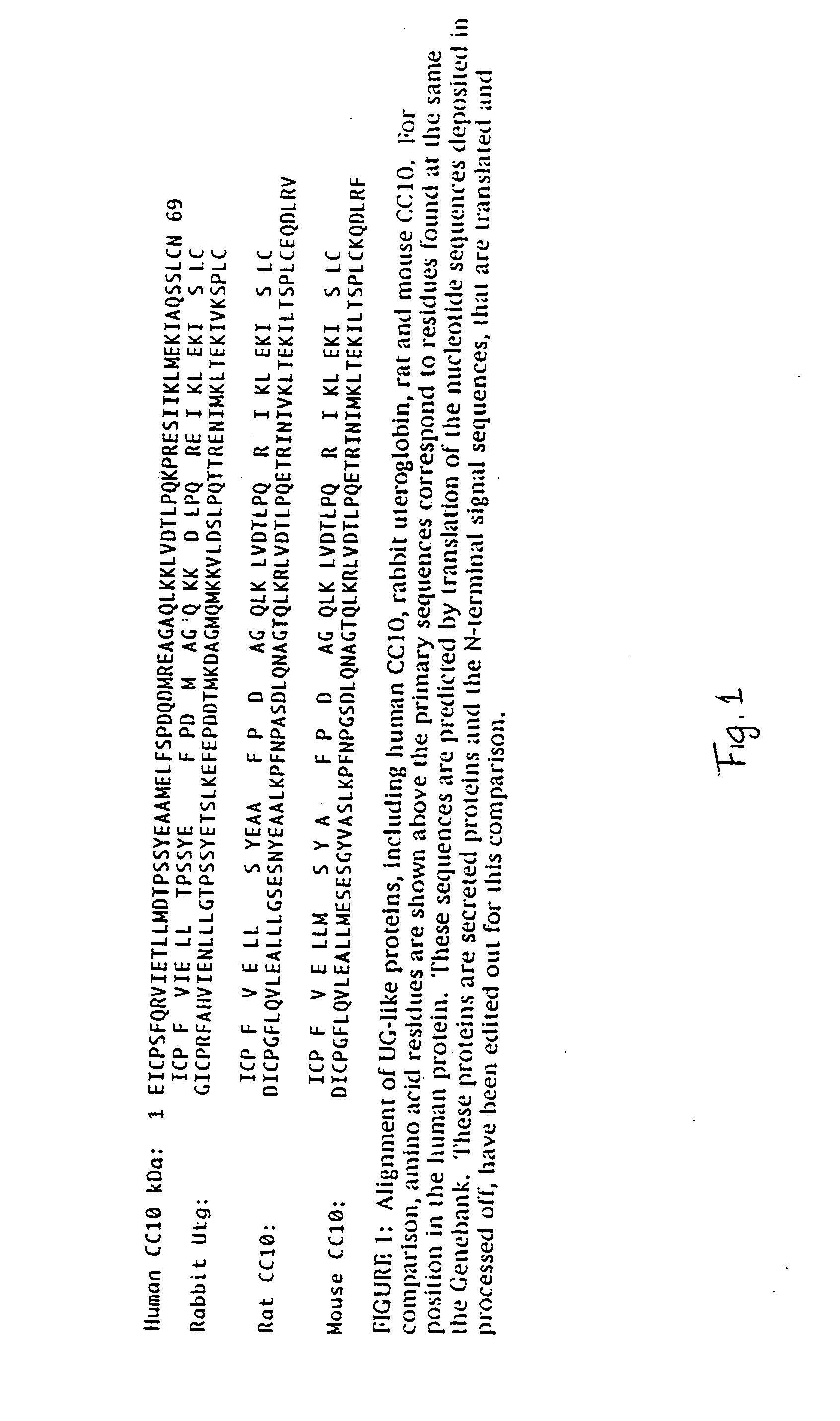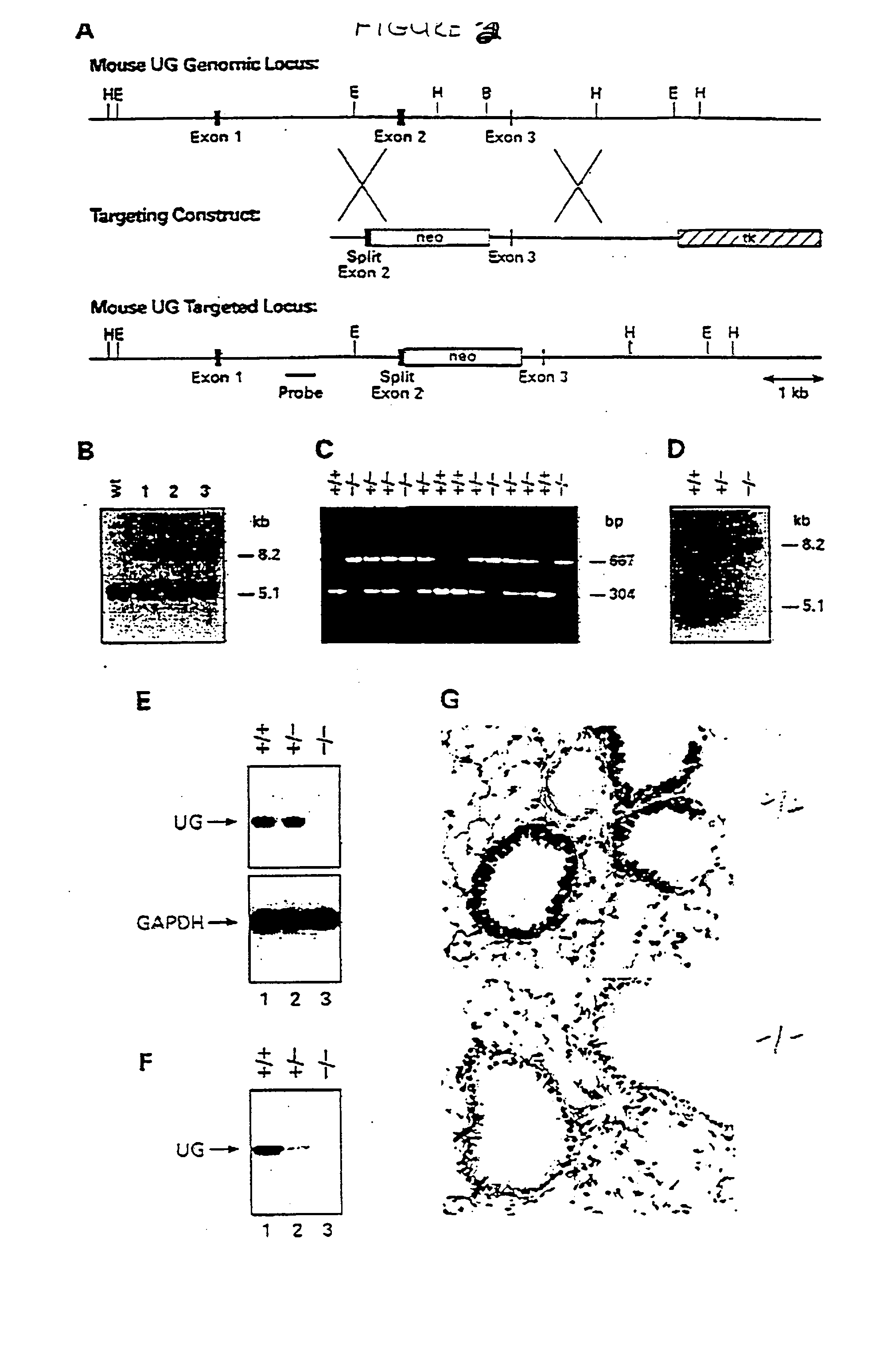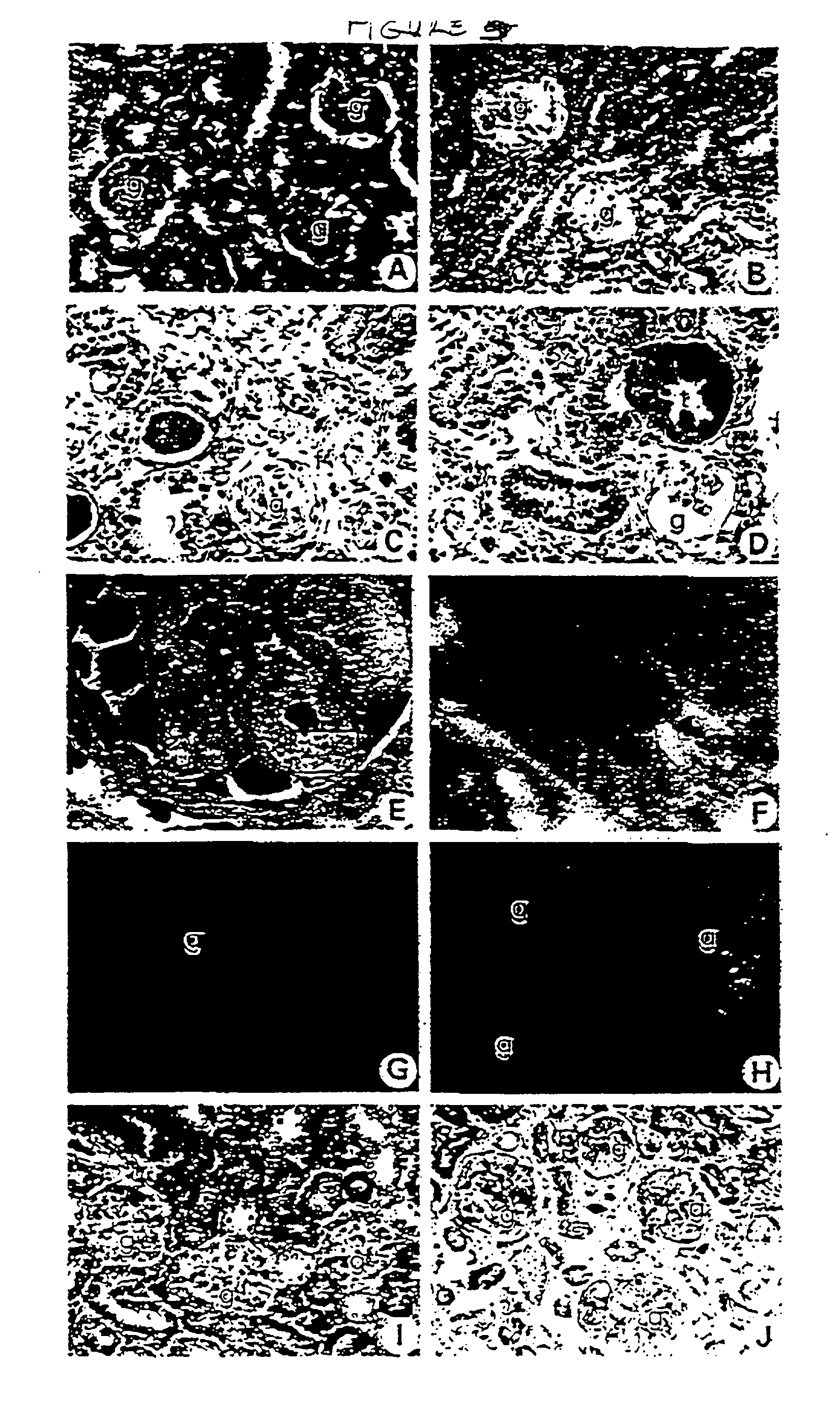Recombinant human uteroglobin in treatment of inflammatory and fibrotic conditions
a technology of uterine uterus and uterine fibrosis, which is applied in the direction of immunological disorders, drug compositions, peptides, etc., can solve the problems of end stage renal failure, organ non-functionality, and major problems of chronic inflammatory and fibrotic disease in a significant percentage of this patient population, so as to reduce the plasma or tissue levels of ug and mitigate the role of metastasis
- Summary
- Abstract
- Description
- Claims
- Application Information
AI Technical Summary
Benefits of technology
Problems solved by technology
Method used
Image
Examples
example 1
In Vivo Experiments
[0148] Recombinant human UG was obtained by the method of Mantile et al. (1993).
[0149] One male and one female of the species P. cynocephalus, weighing approximately 400 grams each were delivered by C-section at 142 days of gestation. This is an established model of RDS (Coalson, J. J., et al. Baboon Model of BPD. II: Pathologic features. Exp. Mol. Pathol. 37: 355-350 (1982)).
[0150] After delivery, the infants were anesthetized with ketamine (10 mg / kg) and intubated with a 2.5 mm diameter endotracheal tube. Blood gases and pressure were monitored via an arterial line placed by percutaneous injection into the radial artery. A deep venous line was placed percutaneously into the saphenous vein through which fluids, antibiotics, and drugs were administered. Animals were maintained on servo-controlled infrared warmers and ventilated with a standard time-cycled, pressure-regulated ventilator with humidifiers maintained at 36-37.degree. C. Initial setting were FiO.sub.21...
example 2
Inhibition of Hydrolysis of Artificial Surfactant by Soluble PLA, In Vitro
[0153] RhUG inhibits hydrolysis of artificial surfactant by soluble PLA.sub.2s in vitro. Survanta is an artificial surfactant derived from bovine lung and is used to treat pre-term neonates with RDS and adults with RDS (ARDS). Hydrolysis of Survanta by a Group I soluble PLA.sub.2, i.e. porcine, pancreatic PLA.sub.2 (Boehringer Mannheim) is characterized by its ability to compete as a substrate with a fluorescent phosphatidylcholine substrate (Cayman Chemicals), generating arachidonic acid as a product.
[0154] Survanta is a substrate for in vitro degradation by Group I soluble PLA.sub.2s. Survanta is rapidly degraded in vitro by PLA.sub.2s found in the extracellular fluids of a human lung. RhUG inhibits degradation of Survanta in vitro.
example 3
Construction of UG Knockout Mouse
[0155] A transgenic UG KO mouse was created for the purpose of determining the role of uteroglobin in mammalian physiology, as well as to generate a model for UG as a therapeutic in several inflammatory clinical conditions. The first step was to construct an appropriate DNA vector with which to target and interrupt the endogenous murine uteroglobin gene. The 3.2 kb BamHI-EcoRI DNA fragment containing exon 3 and flanking sequences of the uteroglobin gene from the 129 / SVJ mouse strain (Ray, 1993) were subcloned into the corresponding sites of the pPNW vector as described in Lei et al (1996). A 0.9 kb fragment containing part of exon 2 and its upstream sequence was amplified by PCR (with primers Primer-L (from Intron 1): 5'-TTC CAA GGC AGA ACA TIT GAG AC-3'; Primer-R (from Exon 2): 5'-TCT GAG CCA GGG TTG AAA GG C-3') with NotI and XhoI restriction sites engineered into the termini for directional subcloning into the gene targeting vector. In this constr...
PUM
| Property | Measurement | Unit |
|---|---|---|
| molecular weight | aaaaa | aaaaa |
| molecular weight | aaaaa | aaaaa |
| concentration | aaaaa | aaaaa |
Abstract
Description
Claims
Application Information
 Login to View More
Login to View More - R&D
- Intellectual Property
- Life Sciences
- Materials
- Tech Scout
- Unparalleled Data Quality
- Higher Quality Content
- 60% Fewer Hallucinations
Browse by: Latest US Patents, China's latest patents, Technical Efficacy Thesaurus, Application Domain, Technology Topic, Popular Technical Reports.
© 2025 PatSnap. All rights reserved.Legal|Privacy policy|Modern Slavery Act Transparency Statement|Sitemap|About US| Contact US: help@patsnap.com



